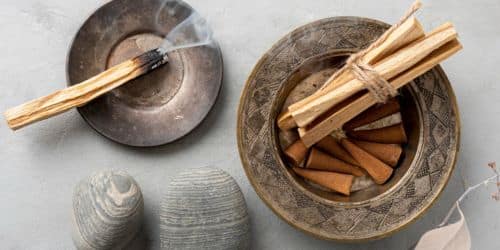Traditional Chinese medicine (TCM) is an ancient holistic healing system that has been practiced continuously for thousands of years. This guide provides an overview of TCM, including its history and key concepts like yin-yang theory. It explains techniques like acupuncture and Chinese herbal formulas, as well as TCM’s approach to nutrition, lifestyle, and diagnosis.
A Brief History of This Ancient Holistic Practice
Traditional Chinese medicine (TCM) has been around for thousands of years – its origins can be traced all the way back to the 3rd century BCE! Though it may seem new to many people in the West, TCM is actually one of the oldest continuously practiced systems of medicine in the world. It developed in China over millennia and is rooted in ancient Daoist philosophy.
The key text laying the foundation for TCM is called the Huangdi Neijing (The Yellow Emperor’s Inner Classic), written around 300 BCE. It described core concepts like yin-yang theory and meridian channels that are still central to TCM today. Over the centuries, renowned practitioners expanded on these early ideas and created new techniques like acupuncture and pulse diagnosis. By the 6th century CE, herbal formulas had been compiled into materia medica for student reference.
TCM continued to evolve and adapt over the centuries, as dynasties rose and fell in China. In the 20th century, efforts were made to integrate TCM with Western medicine. These days, Blue Poppy Chinese Herbal Medicine and others are helping TCM to gain popularity worldwide. TCM continues to grow as people discover its effectiveness for treating chronic conditions and promoting wellness. Exciting new research is also revealing the science behind why it works!
The Yin-Yang Philosophy Behind This Holistic System
At the heart of TCM is a deep appreciation for the natural order of things. Practitioners recognize that all life – and indeed, the entire universe – is governed by opposing yet complementary forces. These forces are called yin and yang.
Yin represents darkness, cold, stillness, inwardness and femininity. Yang represents light, warmth, motion, outwardness and masculinity. One cannot exist without the other. According to TCM philosophy, optimal health is achieved by maintaining a dynamic balance between yin and yang.
Illness occurs when there is too much or too little of either force. The TCM practitioner’s role is to identify imbalances and gently restore harmony between yin and yang. Treatment modalities like acupuncture, herbal formulas, and qigong exercises aim to reestablish equilibrium so the body can heal itself.
Acupuncture – An Ancient Technique With Proven Benefits
One of the practices most people associate with TCM is acupuncture. This technique involves inserting ultra-thin needles into specific points on the body to stimulate healing. Sounds intense, but it’s actually quite relaxing! The needles are barely felt when properly placed by a skilled acupuncturist.
Acupuncture points correspond to meridians – channels through which vital energy flows throughout the body. Stimulating these points helps regulate the flow of energy to organs and tissues. This alleviates pain, reduces inflammation, and brings the body back into balance.
Clinical trials have shown acupuncture can effectively treat chronic pain, nausea, headaches and more. It’s even been found to reduce side effects of cancer treatments like chemotherapy. Many insurance plans now cover acupuncture given the compelling evidence behind it.
The Healing Power of Chinese Herbal Formulas
Herbal medicine is another major component of TCM. In fact, the Chinese materia medica contains over 13,000 natural substances used medicinally! Most herbal formulas combine multiple herbs that work synergistically. Each herb has a unique therapeutic action that contributes to the overall effect.
For example, licorice root is added to many formulas because it harmonizes the actions of the other herbs. Chinese skullcaps are cooling and anti-inflammatory. Ginseng tonifies qi, your vital energy. The combinations are endless. TCM practitioners choose ingredients and dosages carefully based on your specific needs.
Herbs can be taken as teas, tinctures, powders or pills. They gently support the body’s natural ability to heal. Herbal medicine is used to treat respiratory conditions, gastrointestinal issues, pain, anxiety, insomnia, gynecological disorders and more. Quality and safety are paramount when sourcing Chinese herbs.
Nutrition and Lifestyle Are Key Components of TCM
While acupuncture and herbal remedies are perhaps most associated with TCM, nutrition and lifestyle factors are considered just as important for cultivating wellness. In TCM, food is medicine! Practitioners often prescribe dietary adjustments to rebalance the body.
For example, warming ginger tea might be recommended to dispel cold and dampness. A patient suffering from excessive heat may be told to avoid spicy foods and eat more cooling fruits. The therapeutic potential of food goes far beyond vitamins and minerals. TCM recognizes the energetic action each food has on the body and leverages that power.
In addition to diet, exercise modalities like tai chi and qigong are often incorporated into treatment plans. These mind-body practices build strength while also cultivating mindfulness through rhythmic, flowing movements. Regular practice boosts immunity, helps reduce stress, and brings a sense of inner calm.
An Arsenal of Techniques for Treating Health Conditions
From back pain to infertility, TCM has effective therapies for all sorts of health conditions. The holistic TCM approach aims to get to the root cause of illness by addressing imbalances, not just suppressing symptoms. Treatment protocols are tailored to each patient’s unique constitution and medical history.
For example, acupuncture and Chinese herbs are commonly used to reduce inflammation in chronic pain conditions like arthritis. Patients often report significant pain relief and improved mobility. For stress-related digestive issues, dietary changes, herbs, acupuncture, meditation and massage may be prescribed together to harmonize the gut.
TCM excels at preventing illness by optimizing wellness before disease develops. But it also offers drug-free options for treating problems once they arise. The goal is always to stimulate the body’s innate self-healing capabilities.
Combining the Best of Both Worlds – TCM and Western Medicine
Many people find TCM to be wonderfully complementary to conventional medical care. Combining Eastern and Western approaches provides the best of both worlds. TCM prioritizes disease prevention and wellness enhancement. It offers safe, natural alternatives for common health problems.
Meanwhile, Western medicine excels at diagnosis, emergency treatment, and management of serious illness. No good physician would advise abandoning Western medical care in favor of only using TCM. But adding TCM therapies to your health regimen can provide relief when modern drugs fail.
The key is open communication with all your healthcare providers. Make sure they are aware of any supplements or treatments you are using. Track your symptoms and progress. Together you can determine how to integrate TCM and conventional medicine in the most optimal way.
A Time-Tested Approach Gaining Popularity Worldwide
With roots dating back over two millennia, TCM represents the accumulated wisdom of countless practitioners. It offers a profoundly different way of understanding health – one that sees the mind, body and spirit as interconnected.
In recent decades, as more clinical evidence emerges and interest grows, the global reach of TCM has expanded exponentially. There are now over 50 accredited TCM schools in the U.S. alone. Thousands of licensed acupuncturists practice across North America.
People fed up with toxic pharmaceuticals and invasive surgery are turning to TCM’s natural therapies resulting in a growing holistic health market. They appreciate the emphasis on prevention and harmony with nature central to this ancient approach. As you learn more about TCM, you too may discover untapped potential for healing and well-being.
Experiencing the Healing Touch of TCM
TCM encompasses a variety of hands-on treatment modalities that complement acupuncture and herbal medicine. Many involve massage techniques that stimulate specific points and channels to balance energy flow.
Tuina – Soothing Away Aches and Pains
Tuina is a form of rehabilitative massage that aims to relax tense muscles, improve range of motion, and relieve pain. The practitioner uses hand techniques like rolling, kneading, pressing and rubbing along meridian lines and acupressure points. Tuina helps get qi and blood circulating properly.
This massage modality is often used to treat musculoskeletal conditions like neck pain, sciatica, and injuries from sprains or strains. It’s deeply relaxing and can treat issues originating in both soft and dense tissues. Clinical trials confirm tuina’s effectiveness for various pain conditions.
Gua Sha – Scraping Away Stagnation
Gua sha is an unusual massage technique that involves scraping the skin in downward strokes with a smooth-edged tool. It breaks up adhesions and scar tissue, flushes out toxins, and brings blood flow to stagnant areas. The skin may redden as circulation improves – a desired effect.
In Chinese medicine theory, gua sha resolves qi and blood stagnation that can cause pain and illness. It’s frequently used for chronic neck tension, back pain, headaches and fatigue. Gua sha’s anti-inflammatory and immune-boosting effects have been demonstrated in studies.
Cupping – Releasing Blockages
Those curious red or purple circular marks seen on some athletes represent another unique TCM therapy – cupping. Suction cups are placed on the skin and the air pumped out, lifting the skin gently to stimulate circulation. Blood flows to the area, resolving stagnation.
Cupping is used to treat respiratory diseases, gastrointestinal issues, pain, inflammation and more. The suction effect is thought to loosen adhesions, promote flexibility and remove toxins. Used properly, it can produce remarkable therapeutic benefits.
Tui Na – A Soothing Reset
Tui na literally translates to “push grasp”. It combines massage, acupressure and manipulation to realign joints, muscles and tendons. Practitioners use their fingers, hands, elbows and knees to apply pressure. Tui na improves range of motion and relieves pain.
It excels at treating musculoskeletal conditions like sprains, strains and tendonitis. Tui na techniques help reduce tension by stimulating blood flow and activating the body’s natural pain-relieving chemicals. The focused pressure rebalances areas of stagnation.
The Takeaway
TCM offers a time-tested path to whole-body wellness rooted in nature and backed by centuries of hands-on healing experience. Why not give it a try? You may be pleasantly surprised by what this ancient practice can do for your health!






